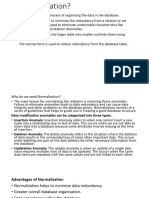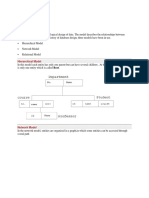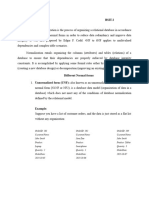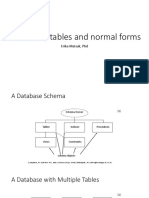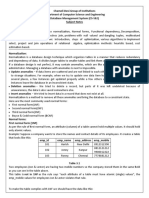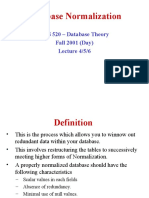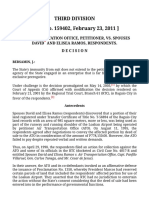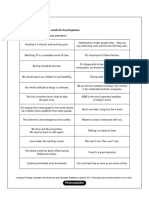0% found this document useful (0 votes)
16 views12 pagesDbms Notes
This document provides an overview of database tables and normalization, explaining key concepts such as rows, columns, primary keys, and foreign keys. It details the normalization process, including various normal forms (1NF, 2NF, 3NF, BCNF, 4NF, 5NF, 6NF) aimed at minimizing data redundancy and improving data integrity. Additionally, it introduces SQL, focusing on Data Manipulation Language (DML) commands and SELECT queries for managing and retrieving data from databases.
Uploaded by
Brindha SriCopyright
© © All Rights Reserved
We take content rights seriously. If you suspect this is your content, claim it here.
Available Formats
Download as DOCX, PDF, TXT or read online on Scribd
0% found this document useful (0 votes)
16 views12 pagesDbms Notes
This document provides an overview of database tables and normalization, explaining key concepts such as rows, columns, primary keys, and foreign keys. It details the normalization process, including various normal forms (1NF, 2NF, 3NF, BCNF, 4NF, 5NF, 6NF) aimed at minimizing data redundancy and improving data integrity. Additionally, it introduces SQL, focusing on Data Manipulation Language (DML) commands and SELECT queries for managing and retrieving data from databases.
Uploaded by
Brindha SriCopyright
© © All Rights Reserved
We take content rights seriously. If you suspect this is your content, claim it here.
Available Formats
Download as DOCX, PDF, TXT or read online on Scribd
/ 12




